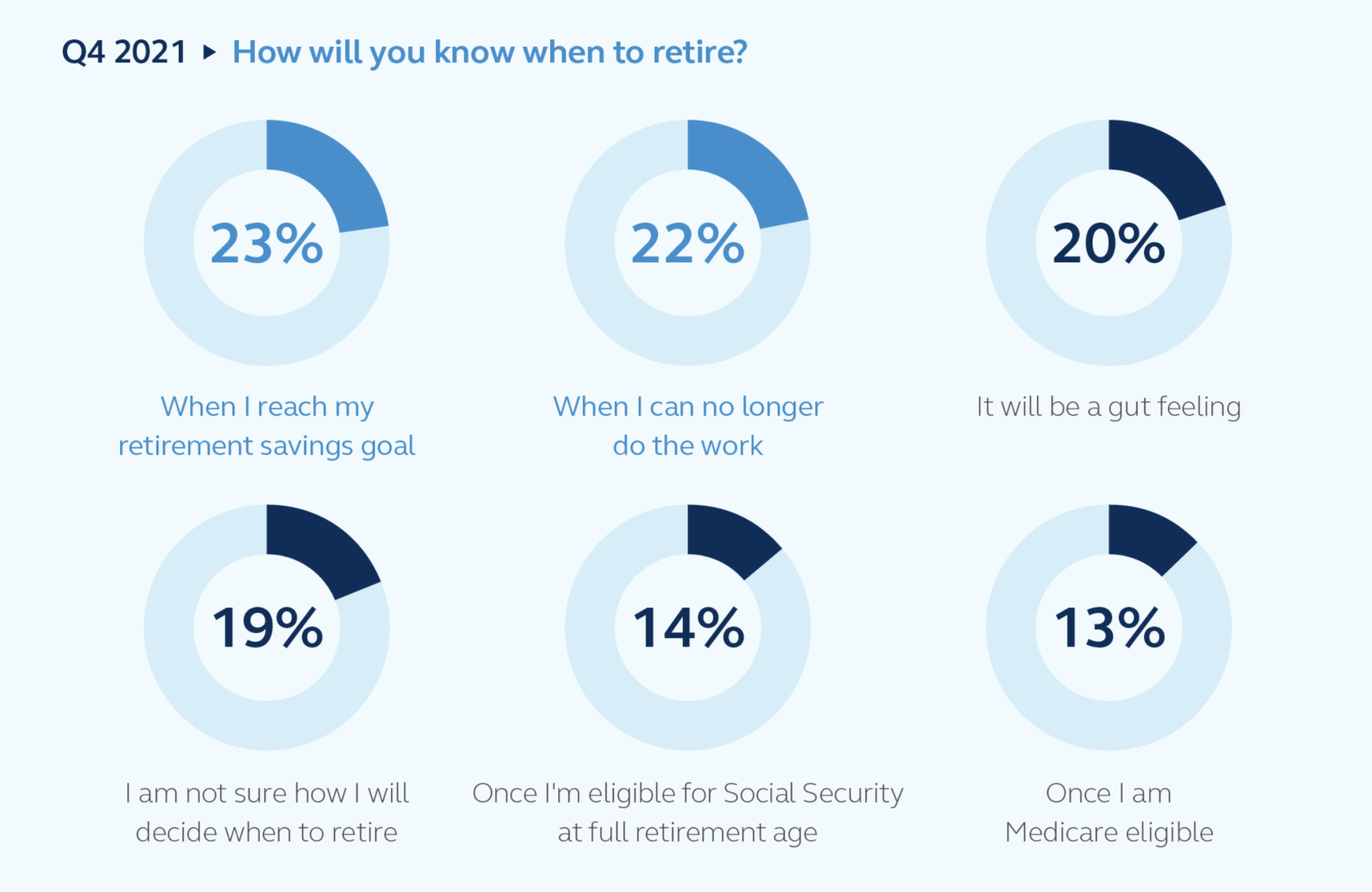By PlanSponsor
•
09 Jun, 2022
Defined contribution retirement plan participants have continued to save for retirement in the face of economic uncertainty caused by the COVID-19 pandemic, according to information collected in the new Vanguard report “How America Saves 2021.” Amber Brestowski, principal and head of advice and client experience for Vanguard’s institutional investor group, says that this year the annual report shows that plan sponsors continue to support participants’ progress toward retirement preparedness. “Plan sponsors are using smart plan design to get participants enrolled in retirement plans and saving at higher rates,” she says. “DC plan sponsors are rising to the occasion [and] ensuring that their participants are retirement ready. We also acknowledge the game is changing. Employees’ expectations are increasing and that’s something that the Vanguard plan sponsors that we serve are watching and responding to.” The Retirement Road Vanguard’s survey found that participants’ median total contribution rate—including participant and employer contributions—was 10.4% in 2021, compared to 10.5% in 2020. Vanguard credits plan sponsors adopting automatic deferral and automatic escalation for the rate staying steadfast through the pandemic, market volatility and spiking inflation. Nonetheless, roughly half of retirement plan participants continue to save below the recommended savings rate of 12% to 15% of their salary, the data shows. Vanguard found that slight deferral increases could help close this savings gap, as about 20% of participants saving below these levels are just 1-3% away from the target savings rate. Brestowski adds that plan sponsors and participants have slogged through challenges in the last two years, including increased financial stress at work, that have heavily affected retirement readiness, while more than 70% of Americans say anxiety over finances is their top stressor. “The pandemic shone a bright light on the unstable position of most Americans’ finances,” she says. “[Workers] are looking to their employer to help them with their financial well-being and at the same time, there’s a war for talent, [with] some of the tightest labor markets that we’ve seen in recent history, so employers also know that anxiety over finances jeopardizes an employee’s path to a successful retirement and impacts day-to-day lives.” She adds that employers know that to attract and retain the best talent, they must help employees live their best financial lives. “We see more and more employers spreading their focus beyond retirement to help employees manage their plethora of financial needs,” Brestowski says. Adding Advice Plan sponsors are meeting the demand with financial wellness benefits—including tools and resources for participants to address their overall financial picture—alongside retirement plans. Plan sponsors are also increasingly offering access for employees to support their investment acumen and retirement readiness, she adds. For example, 41% of all Vanguard DC plans offered managed account advice in 2021 and almost 80% of large plans offered the service. In 2021, the percentage of participants who were offered managed account advice was 74% and the percentage of participants who were offered managed account advice and accessed the service was 10%. In 2017, the percentage of plans offering managed account advice was 30%, while the percentage of participants offered managed account advice was 55% and the percentage of participants who were offered managed account advice and used the service was 7%, Vanguard finds. Participant and Plan Sponsor Progress David Stinnett, principal and head of strategic retirement consulting at Vanguard, highlights data from the survey that he says shows continued ”forward progress” for retirement investors. The report shows that 2% of participants stopped contributing to retirement plans in 2021, and 7% of participants decreased their salary deferrals compared to figures from 2019 and 2020. In 2021, 17% of participants made a participant-directed increase, 25% made an increase due to auto-escalation and 49% made no change. “You could be excused for thinking, with a year like that, ‘Maybe we won’t see forward progress, maybe we’ll see things halt or even reverse given all the exogenous factors in the market,’” Stinnett says. “And I was just delighted to see that that was not the case.” In 2020, 9% of participants made no change, 2% made an increase due to auto-escalation, 16% made a participant-directed increase, 8% made a participant-directed decrease and 2% stopped contributing. Vanguard found that the estimated participation rate for DC plans was 85% in 2021, compared to 78% in 2012. The participation rate for plans that used auto-enrollment in 2021 was 93%, compared to 66% for plans that did not use auto-enrollment. In 2021, 58% of plan sponsors using auto-enrollment increased the default contribution rate to 4% or higher, Stinnett adds. “[Research shows] not only higher participation rates year over year, but a very stark difference between those plans that have automatic enrollment and those plans which do not,” he says. Another signal that participants continued to save: retirement investors’ account trading activity was muted in 2021, Vanguard found. Among Vanguard DC plan participants, 8% traded within their accounts and 9% did not make any changes to their investments. “The decline in participant trading is partially attributable to participants’ increased adoption of target-date funds,” the report states. “Only 3% of participants holding a single target-date fund traded in 2021.” Participants have also preserved their assets for retirement. In 2021, about 25% of participants could have taken an account distribution because of a job separation, yet 83% of that group continued to preserve their plan assets for retirement by either remaining in the employer’s plan or rolling over the savings to an individual retirement account or a new employer’s plan. “In terms of assets, 98% of all plan assets available for distribution were preserved and only 2% were taken in cash,” the report states.










